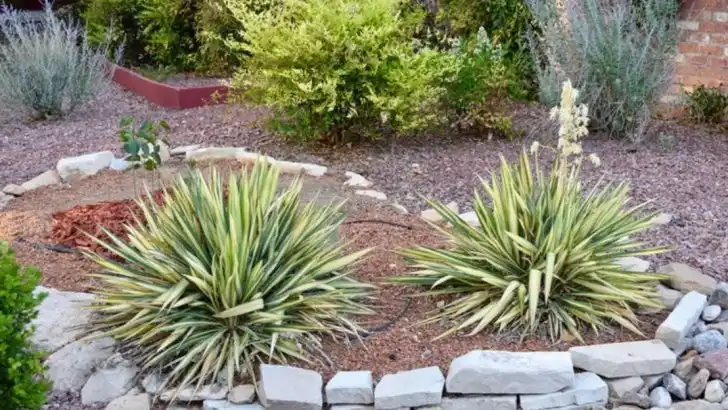A xeriscape garden is the perfect solution for those looking to create a beautiful, low-maintenance landscape while conserving water and supporting a sustainable environment. By choosing the right drought-tolerant plants, you can enjoy a vibrant, thriving garden without the need for constant watering or upkeep.
Many succulents, perennials, and native plants are naturally adapted to dry conditions, making them ideal for xeriscaping. These plants not only save water but also provide color, texture, and year-round beauty to your outdoor space. Whether you’re dealing with hot summers, rocky soil, or limited rainfall, the right plant selection can make all the difference.
In this article, we’ll introduce you to 16 plant varieties that will flourish in your xeriscape garden, helping you create a stunning, eco-friendly landscape with minimal effort.
Agave
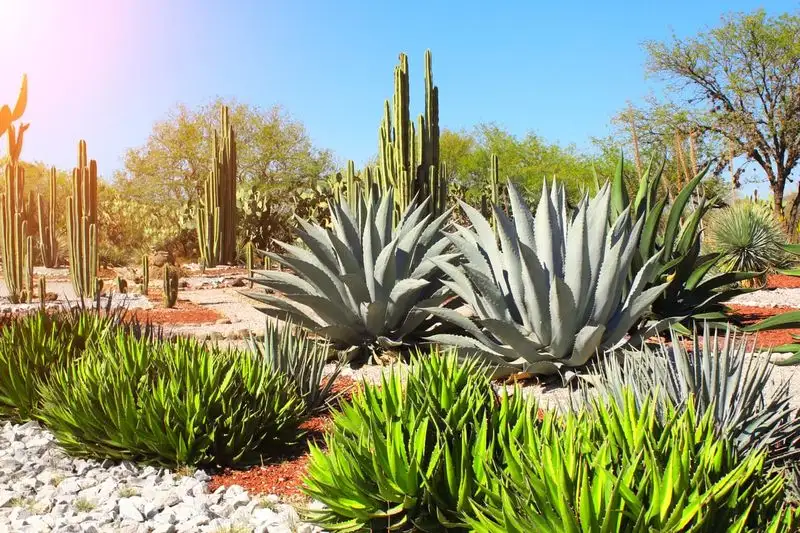
Agave is synonymous with dry, arid landscapes. Its bold, architectural form makes it a standout feature in any garden. With thick, fleshy leaves that store water, agave is perfect for xeriscaping. The plant requires minimal care while delivering maximum impact. Different species offer unique leaf shapes and sizes, adding variety to your garden. Agave can adapt to various soil types but prefers well-drained areas. Its natural defenses, including sharp spines, deter pests, making it a low-maintenance choice for gardeners. It’s a hardy plant that doesn’t just survive in dry conditions—it thrives.
Lavender
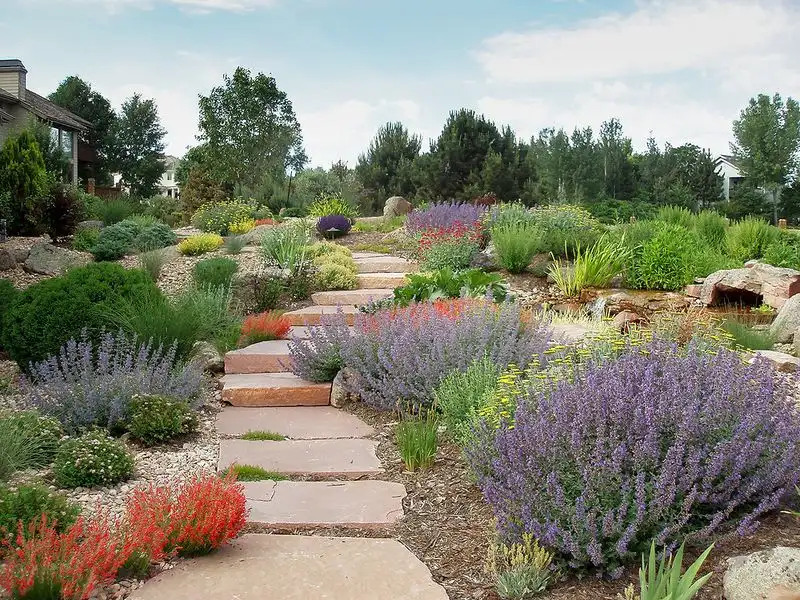
Not only does lavender provide a soothing fragrance, but its silvery foliage and vibrant purple flowers also add visual appeal. Drought-tolerant by nature, lavender thrives in sunny locations with well-drained soil. Regular pruning encourages bushier growth and more prolific blooms. It’s an excellent choice for borders, rock gardens, or as a standalone feature. While it prefers full sun, lavender can tolerate partial shade, offering flexibility in garden planning. Beyond aesthetics, it attracts pollinators, supporting local biodiversity. Its low water requirements make it an eco-friendly addition to xeriscapes.
Sage
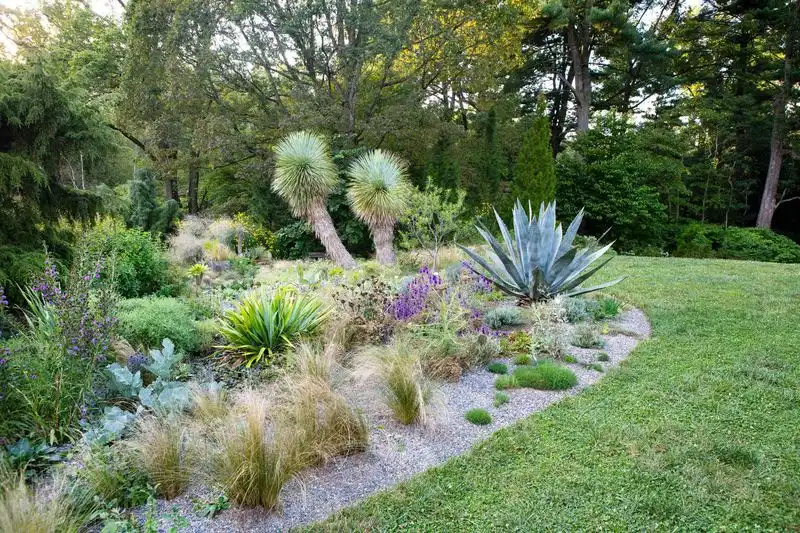
Sage isn’t just for the kitchen; it’s a versatile plant for xeriscaping with its aromatic leaves and colorful flowers. Known for its drought resistance, sage thrives in full sun and well-drained soil. Its leaves offer texture and color variation, ranging from green to purple hues. Regular harvesting prevents woody growth and promotes a bushy appearance. Sage attracts beneficial insects, making it a valuable plant for ecological balance. While low-maintenance, it combines beauty with functionality, enhancing any xeriscape garden with its aromatic presence and resilience.
Sedum
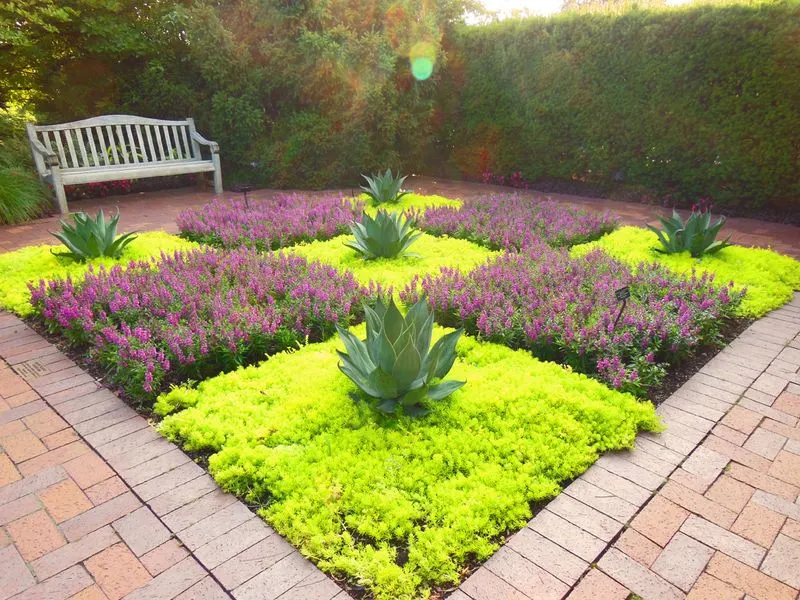
Sedum, also known as stonecrop, is a drought-tolerant succulent ideal for xeriscaping. Its thick, fleshy leaves are water-retentive, and it produces clusters of star-shaped flowers. Sedum is versatile, thriving in poor soil conditions and requiring minimal maintenance. Available in various colors and forms, it adds interest and texture to the landscape. It’s perfect for rock gardens, borders, or as ground cover. Sedum attracts butterflies, enhancing garden biodiversity. Its ability to thrive in harsh climates and its visual appeal make it a preferred choice for sustainable gardening.
Yucca

Yucca stands out for its dramatic, spiky foliage and tall flower spikes. This hardy plant is perfect for xeriscapes, thriving in hot, dry conditions with minimal water. Its architectural form adds vertical interest to gardens. Yucca is adaptable to different soil types, provided they drain well. It’s a low-care option that still delivers high visual impact. The plant’s flowers attract hummingbirds, adding life to your garden. Yucca’s resilience and striking appearance make it a staple for those looking to achieve a sustainable, yet stylish landscape.
Russian Sage

Russian sage offers a cloud of purple blooms and silvery foliage that dances in the breeze. Ideal for xeriscaping, it thrives in sunny, well-drained spots. This plant forms a bushy habit, providing texture and color throughout the summer. Regular pruning encourages denser growth and increases flower production. It’s a magnet for pollinators, supporting beneficial insects like bees and butterflies. Russian sage’s drought tolerance and long blooming period make it a valuable addition to any water-wise garden. Its fragrance and airy appearance add a touch of elegance.
Echinacea

Echinacea, commonly known as coneflower, is cherished for its daisy-like blooms with bold, conical centers. It’s well-suited for xeriscapes, requiring little water and thriving in sunny spots. Echinacea adds bursts of color and attracts pollinators, enhancing garden biodiversity. The plant’s tough nature ensures it withstands dry spells without losing its charm. It’s an attractive choice for borders or mixed plantings, and deadheading encourages more blooms. Echinacea’s resilience and visual appeal make it a favorite among gardeners aiming for sustainable beauty.
Thyme

Thyme is a versatile herb that excels in xeriscaping due to its hardiness and aromatic foliage. It thrives in dry, sunny conditions and poor, well-drained soils. Thyme’s low-growing habit makes it an excellent ground cover or border plant. It releases a pleasant aroma when walked on or disturbed, adding sensory delight to gardens. The plant is also beneficial for pollinators, attracting bees with its small flowers. Regular trimming encourages dense growth and prolongs blooming. Thyme’s combination of utility and beauty makes it a practical choice for water-wise landscapes.
Yarrow
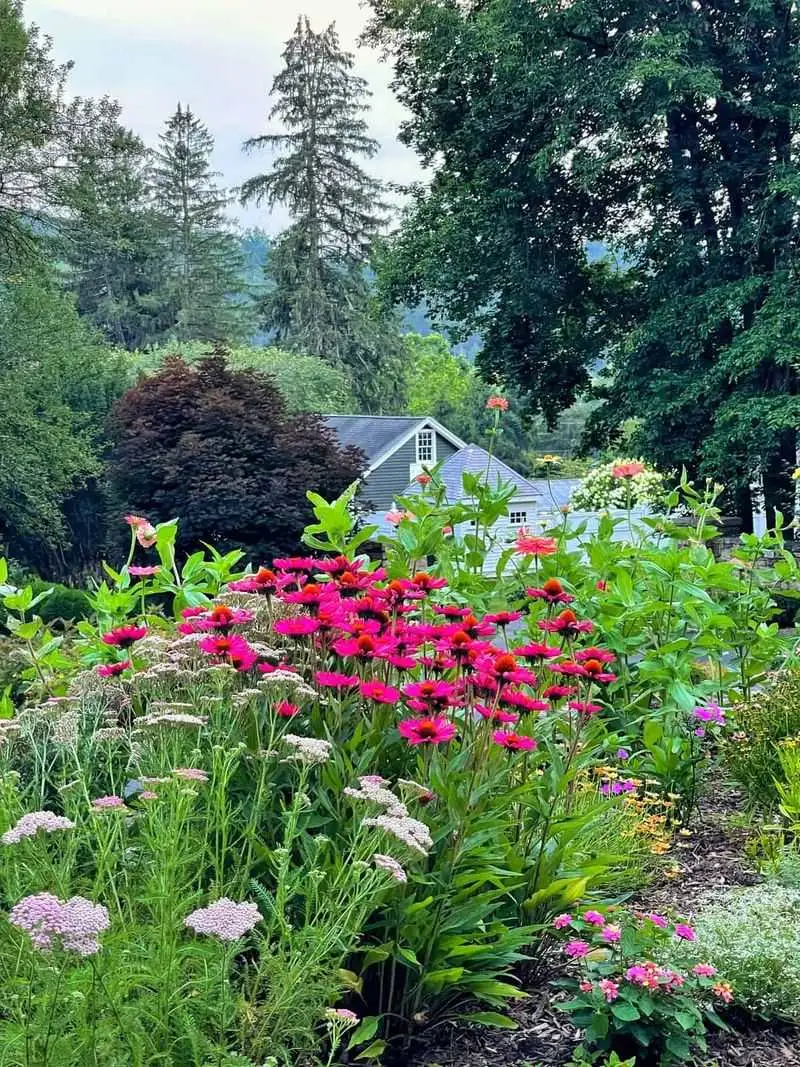
Yarrow is known for its fern-like foliage and flat-topped flower clusters. This resilient plant is perfect for xeriscapes, thriving in sunny areas with poor soil. It requires minimal water and maintenance once established. Yarrow adds color and texture to gardens and attracts beneficial insects, supporting ecological health. It’s a versatile plant, suitable for borders, meadows, or wildflower gardens. With its long blooming season, yarrow provides extended visual interest. Its adaptability and rugged beauty make it a reliable choice for sustainable gardening.
Rosemary
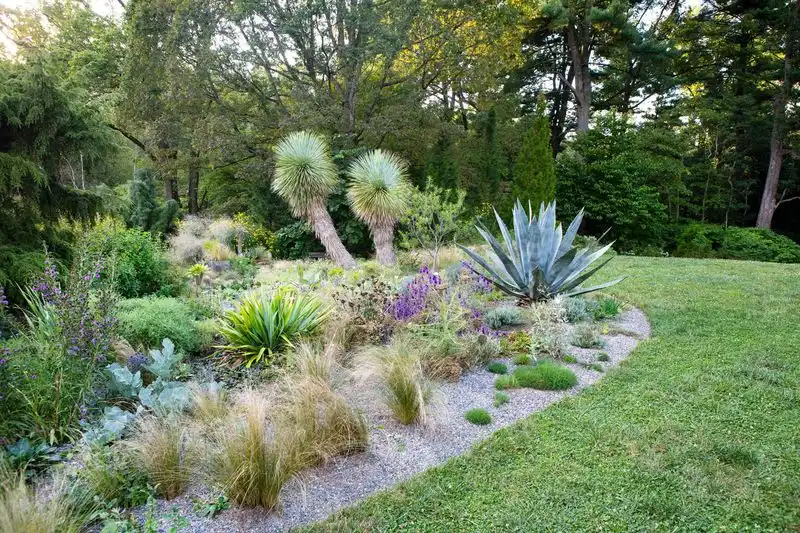
Rosemary is a fragrant herb that excels in xeriscaping due to its drought resistance and aromatic foliage. It thrives in sunny locations with well-drained soil, making it ideal for Mediterranean-style gardens. Rosemary’s needle-like leaves and woody stems add structure and texture to the landscape. It’s an excellent choice for herb gardens or as a companion plant. The plant attracts pollinators and can be used for cooking, providing dual benefits. Regular pruning helps maintain its shape and encourages new growth, enhancing its ornamental appeal.
Penstemon
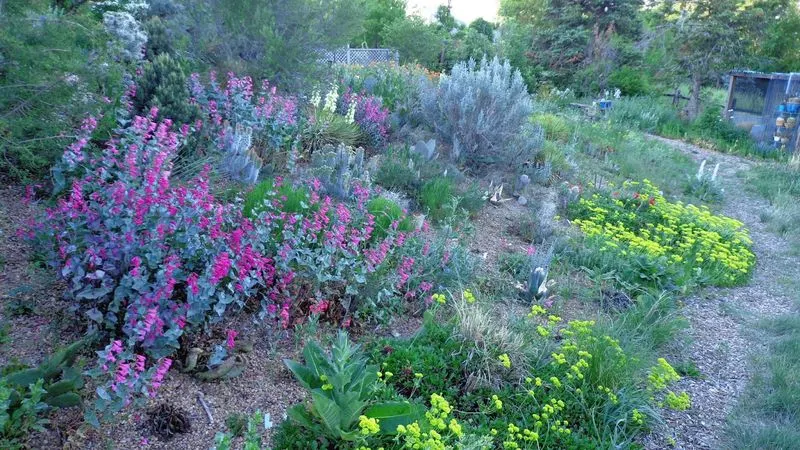
Penstemon, often called beardtongue, is a vibrant addition to xeriscapes with its tubular flowers and bushy habit. It thrives in dry, well-drained environments, requiring little care once established. The plant’s flowers attract hummingbirds and bees, enhancing biodiversity. Available in a range of colors, penstemon adds dynamic visual interest. It’s excellent for borders or as a standalone feature, offering continuous blooms throughout the growing season. This plant’s tolerance to drought and versatility in design make it a popular choice for water-efficient gardening.
Red Hot Poker
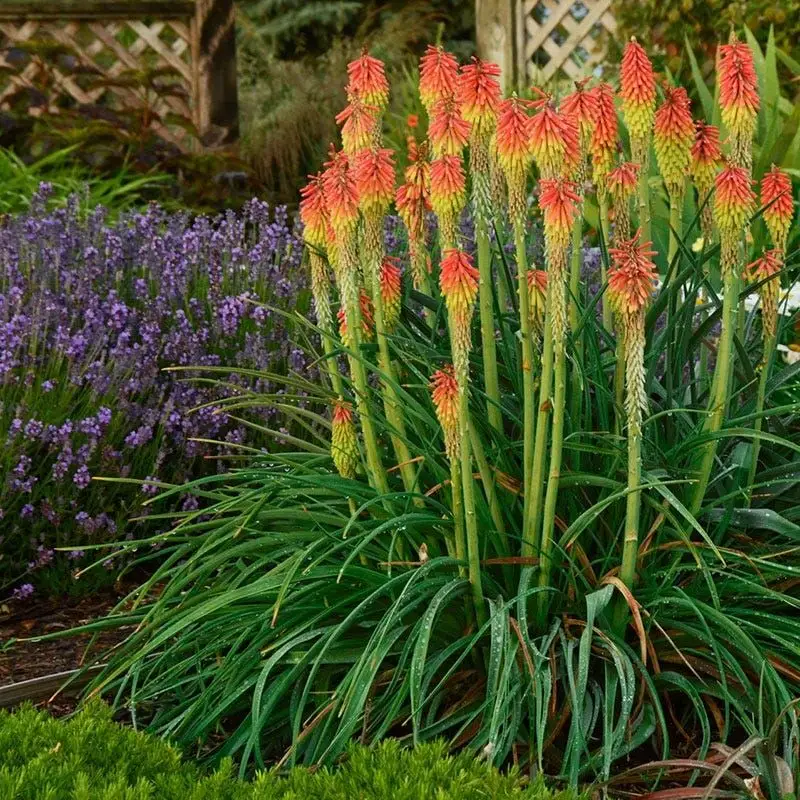
Red Hot Poker, also known as Kniphofia, adds a fiery touch to xeriscapes with its striking flower spikes. These plants thrive in sunny, well-drained locations and are renowned for their drought tolerance. The bold, torch-like flowers bloom from spring to late summer, providing continuous visual interest. Red Hot Poker attracts hummingbirds, adding life and movement to the garden. It’s an eye-catching choice for borders or as a focal point. With minimal water needs and high visual impact, this plant is ideal for sustainable, colorful gardens.
Ice Plant
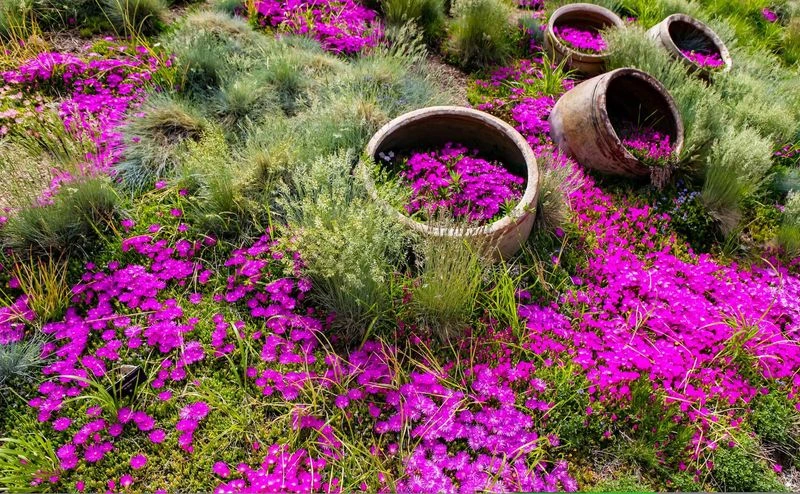
Ice Plant, a succulent ground cover, is notable for its fleshy leaves and vibrant, daisy-like flowers. It thrives in dry conditions and poor, well-drained soil, making it perfect for xeriscapes. Its ability to spread quickly provides excellent ground coverage, suppressing weeds and conserving moisture. The bright flowers attract pollinators, enhancing biodiversity. Ice Plant is ideal for rock gardens or as a colorful border. Its resilience in harsh climates and low maintenance requirements make it a preferred choice for gardeners aiming for both beauty and sustainability.
Kangaroo Paw
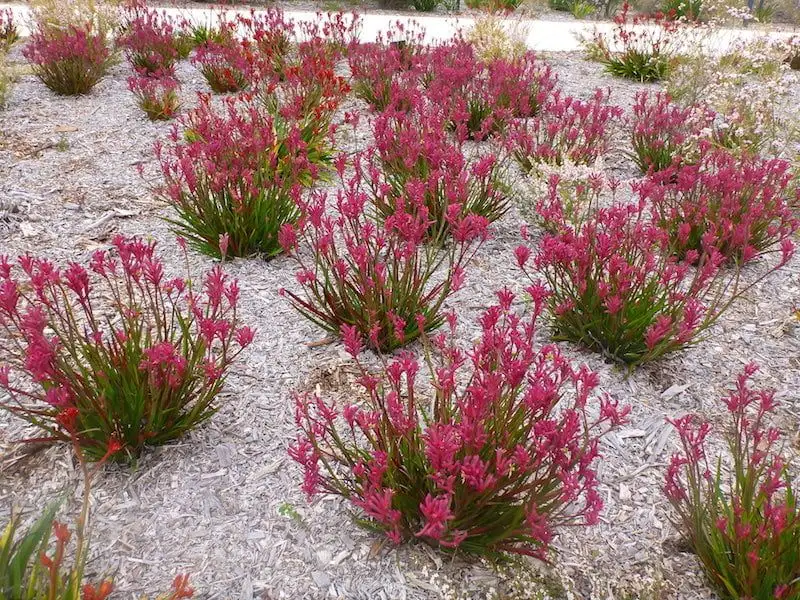
Kangaroo Paw offers an exotic flair with its unique, claw-shaped flowers. Native to Australia, this plant thrives in sunny, well-drained environments and is highly drought-tolerant. Its vivid flowers range from red to yellow, attracting birds and adding dynamic color. Kangaroo Paw is perfect for borders or as an accent plant, providing texture and intrigue. It requires little maintenance, making it an ideal choice for water-conscious gardening. This plant’s striking form and colorful blooms make it a standout feature in any xeriscape setting.
Desert Marigold

Desert Marigold is a hardy annual known for its bright yellow flowers and gray-green foliage. Perfect for xeriscapes, it thrives in hot, dry conditions with minimal water. The plant’s long blooming season provides extended color, and it’s resistant to pests and diseases. Desert Marigold is ideal for borders, rock gardens, or naturalistic plantings. Its cheerful blooms attract pollinators, supporting garden biodiversity. With its low water needs and vibrant appearance, it’s a practical choice for gardeners looking to combine beauty and sustainability.

